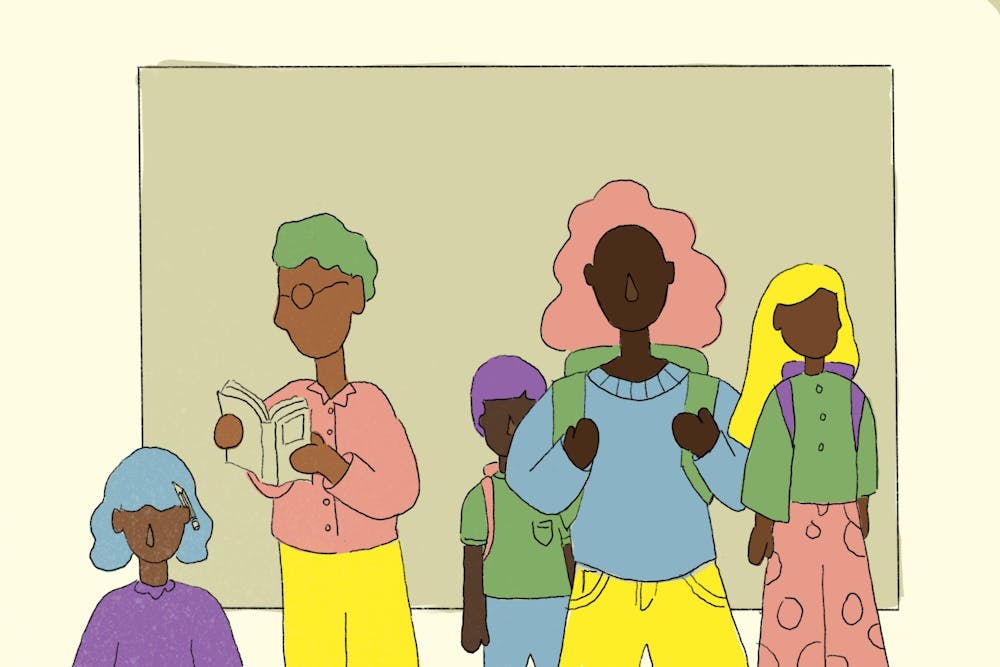While Penn likes to celebrate the fact that legendary American thinker W.E.B. Du Bois was an instructor at the University, many scholars say Du Bois was treated poorly during his time at Penn.
Du Bois, a sociologist and writer, worked as an assistant instructor at Penn in 1896 and 1897, where he conducted research on Philadelphia’s Black communities. Scholars say Du Bois was not allowed to teach and was not offered a position as a permanent faculty member despite his influential research. However, Penn continues to stress its connection to Du Bois through his namesake college house, which was founded in 1978, and an honorary emeritus professorship, which was awarded in 2012. While these symbolic steps can be meaningful, they are incomplete in light of Du Bois’ complicated history at Penn.
Rather than relying on symbolism alone, the University should honor Du Bois’ legacy by taking tangible steps to improve the lives of students of color. Increasing faculty diversity, giving faculty training on power dynamics in the classroom, and expanding multicultural mental health resources could help further this goal.
In 2017, 55% of Penn’s undergraduate and graduate students were non-white. Increasing diversity among professors and teaching assistants could help students of color feel more comfortable in the classroom and encourage them to explore topics they may not have considered beforehand.
Penn has made some positive strides in increasing faculty diversity: The 2019 update to the Action Plan for Faculty Excellence and Diversity found that the number of underrepresented minority faculty members who are tenured or on the tenure track increased by 46% between 2011 and 2018, and the number of women faculty members increased by 22%.
While these are positive trends, there is still some work to be done. Less than 9% of Penn’s standing faculty members identify as underrepresented minorities, and only two standing faculty members identify as Native American. Providing students with mentors who look like them, who have experienced similar upbringings, and who they can talk to can make all the difference when deciding academic and professional paths.
Beyond hiring new faculty, the University should increase training for existing faculty to help them better serve students of color. Women may feel discouraged to interrupt or speak up in a male-dominated class if they were taught to be listeners rather than leaders. Similarly, students of color may feel discouraged to speak out if they grew up in an environment where white voices were valued more than their own. Helping faculty learn more about these issues and giving them tools to combat them on-site can help students of color feel more heard and seen both in and out of the classroom.
Multicultural mental health resources can also benefit students. Mental health issues are often stigmatized or ignored in minority communities, and different minority groups deal differently with systemic political and economic issues.
SEE MORE FROM THE DAILY PENNSYLVANIAN EDITORIAL BOARD:
In the wake of Milken's pardon, Wharton must expand its ethics requirements
Penn and West Phila. deserve more details on Fresh Grocer’s closing
To address these issues, Penn’s Counseling and Psychological Services should cater to the diverse student population they serve. CAPS should have mental health resources geared specifically towards people of color that can help students deal with racialized points of stress and stigma from their own communities. Currently, CAPS offers support groups for students whose first language is Mandarin, women of color, international students, and other groups. While this is a great start, expanding these programs and advertising them more can help some of the students who need it most.
By taking steps to support students of color, the University could truly honor Du Bois’ legacy, one which was not respected during his time at Penn.
Editorials represent the majority view of members of The Daily Pennsylvanian, Inc. Editorial Board, which meets regularly to discuss issues relevant to Penn's campus. Participants in these meetings are not involved in the reporting of articles on related topics.
SEE MORE FROM THE DAILY PENNSYLVANIAN EDITORIAL BOARD:
In the wake of Milken's pardon, Wharton must expand its ethics requirements
Penn and West Phila. deserve more details on Fresh Grocer’s closing









